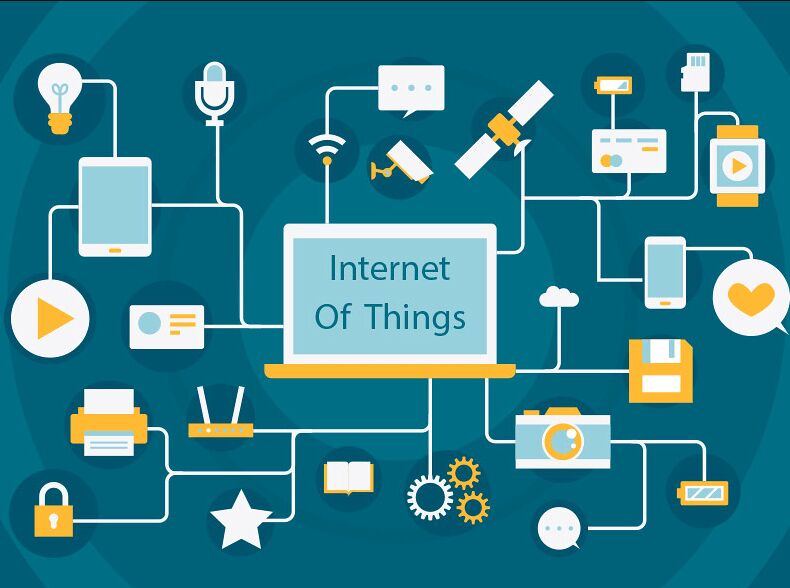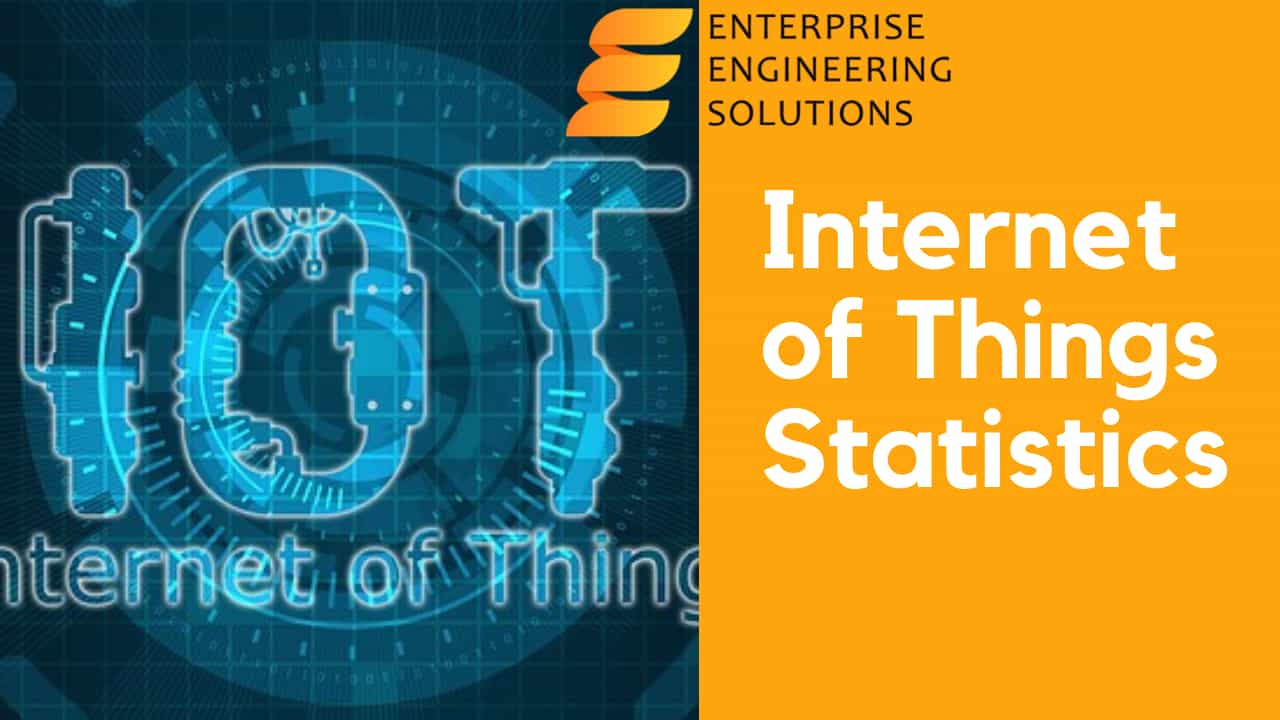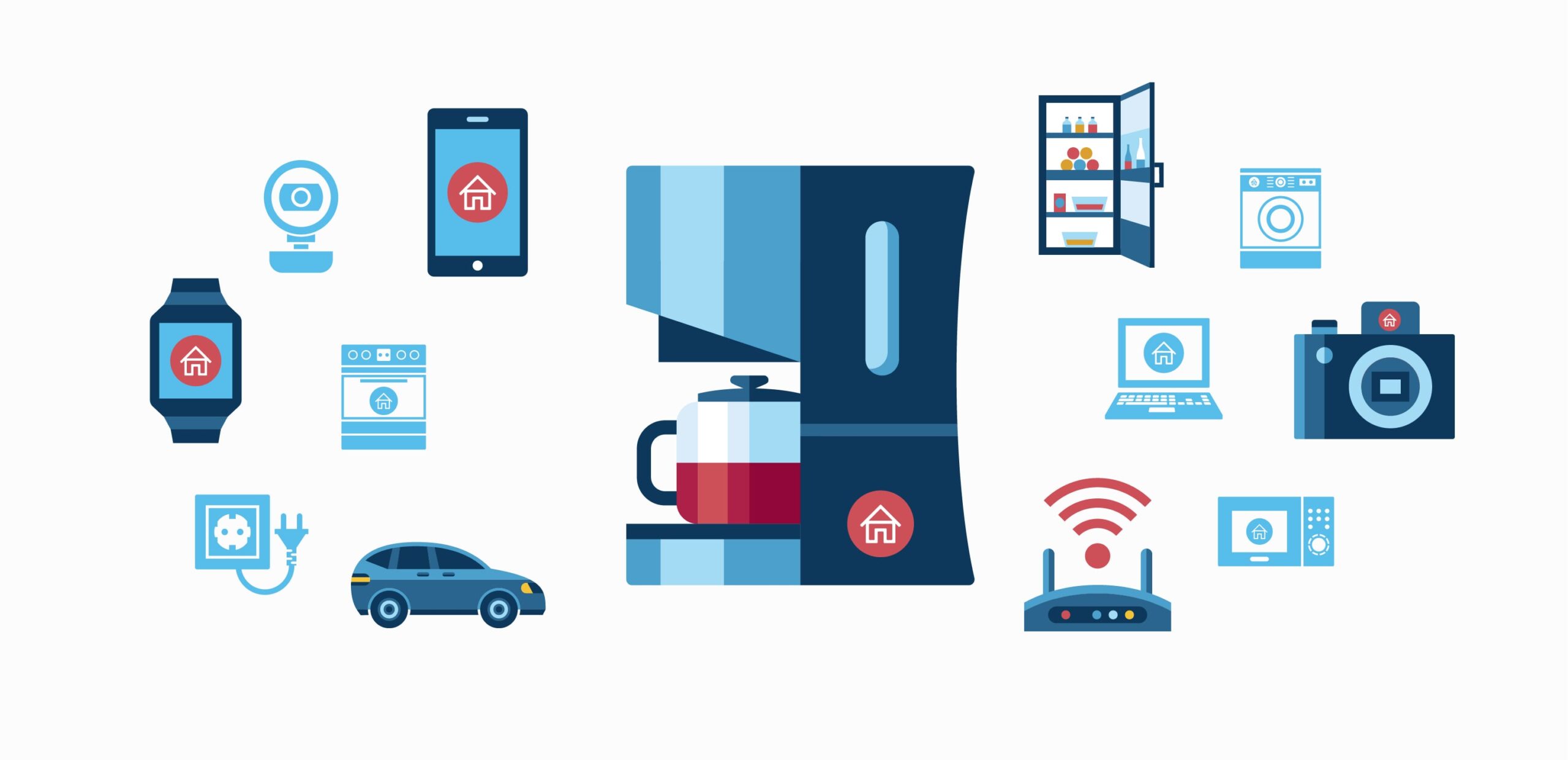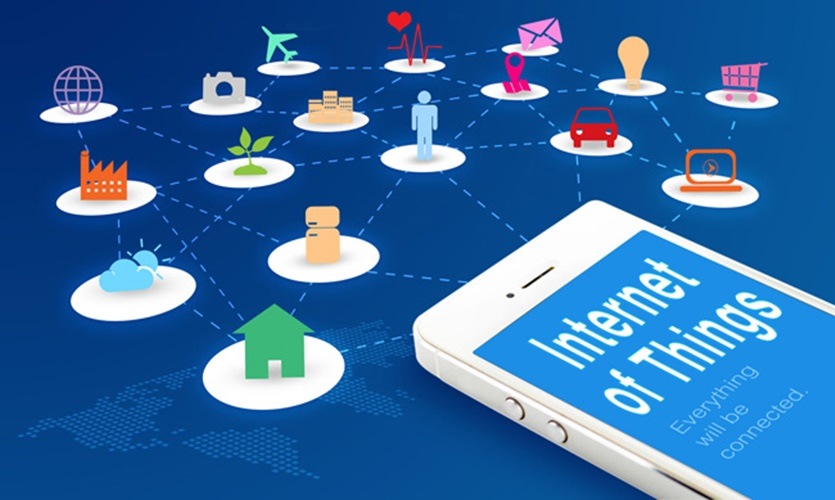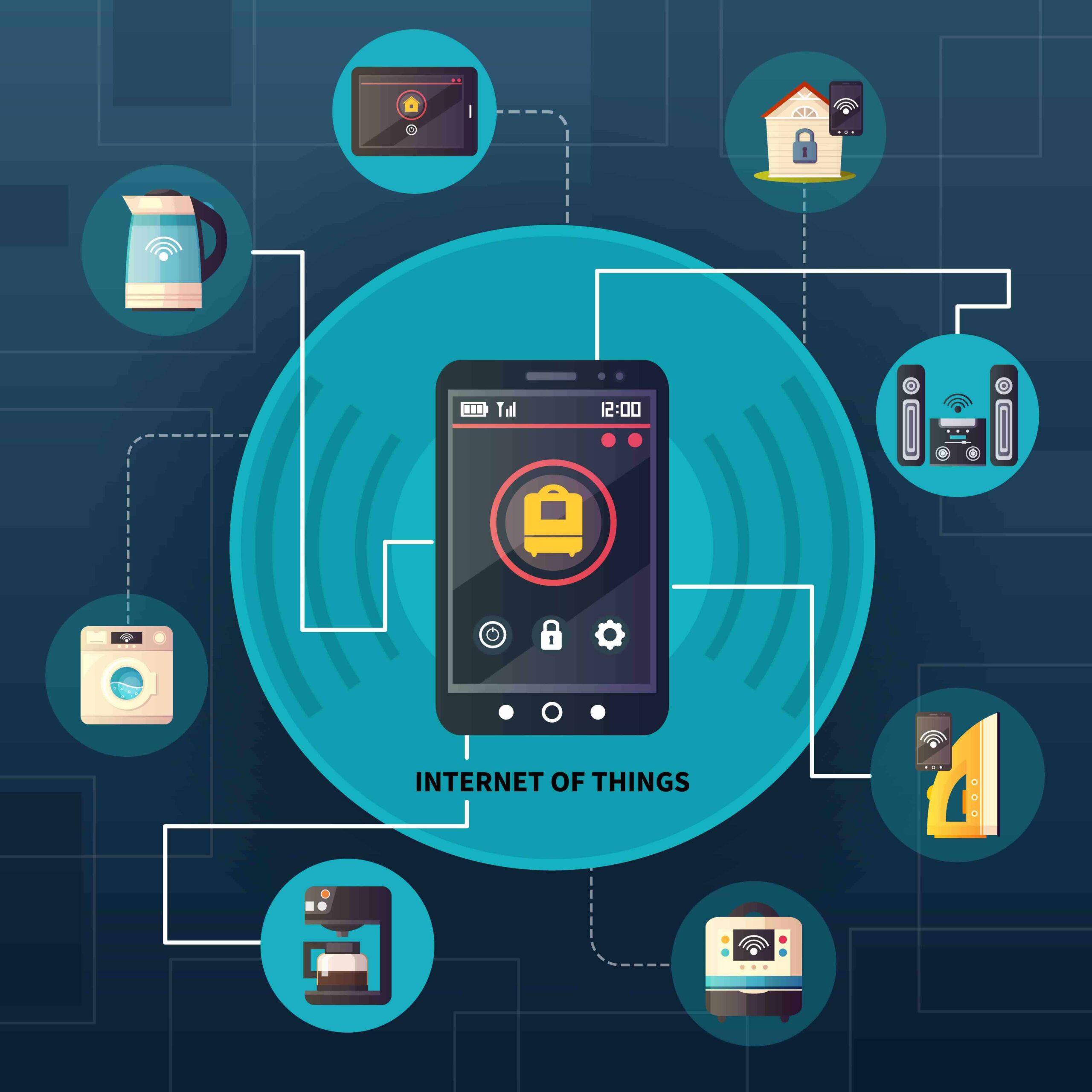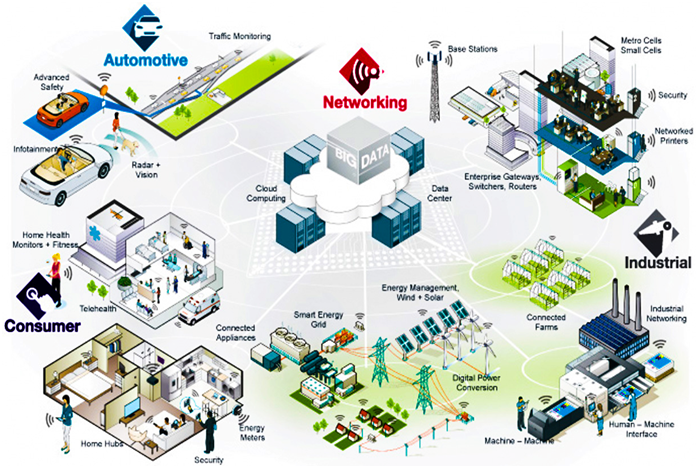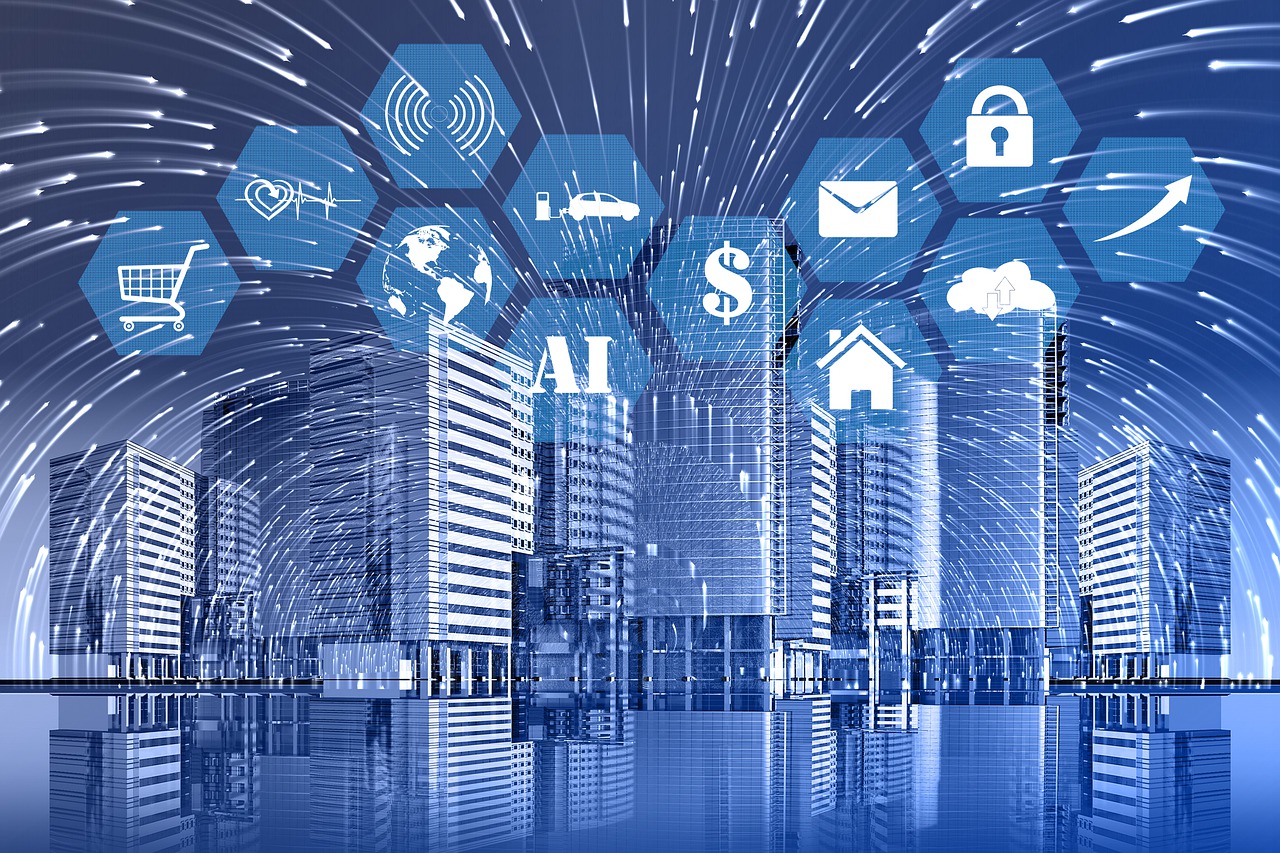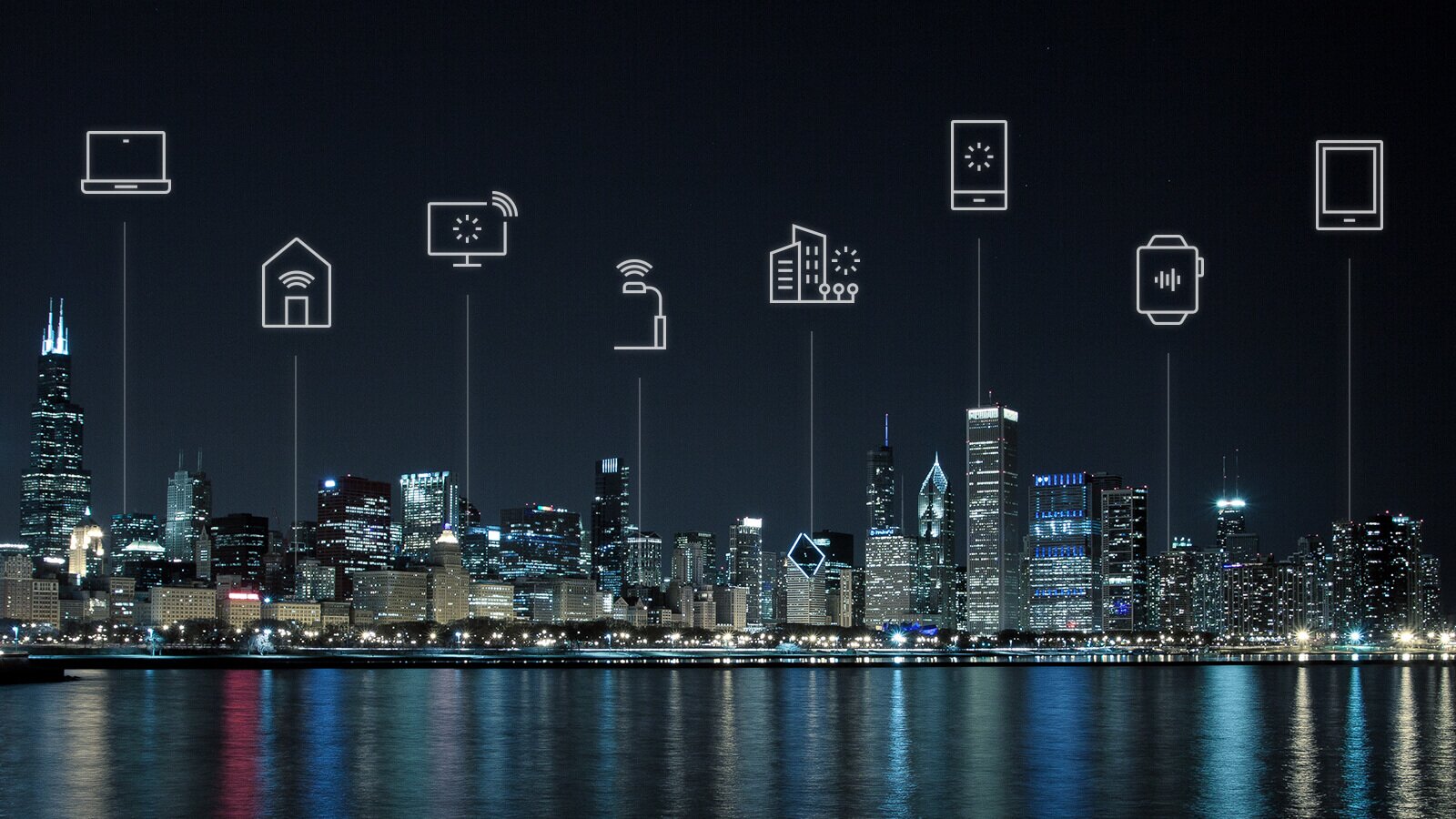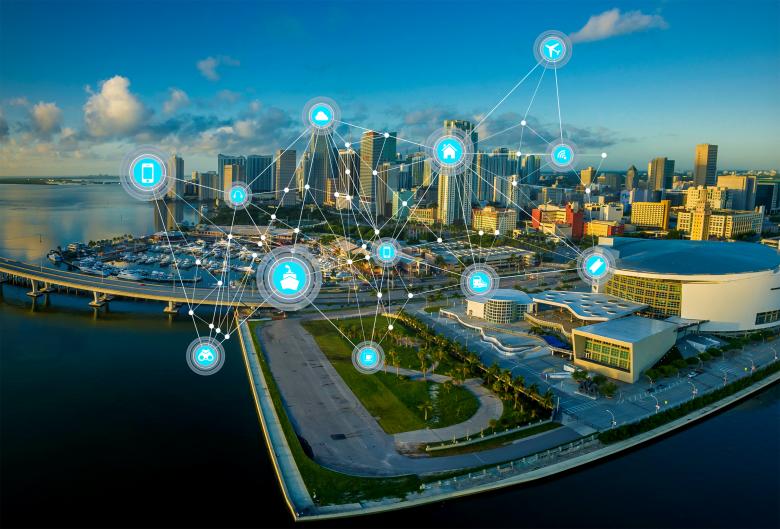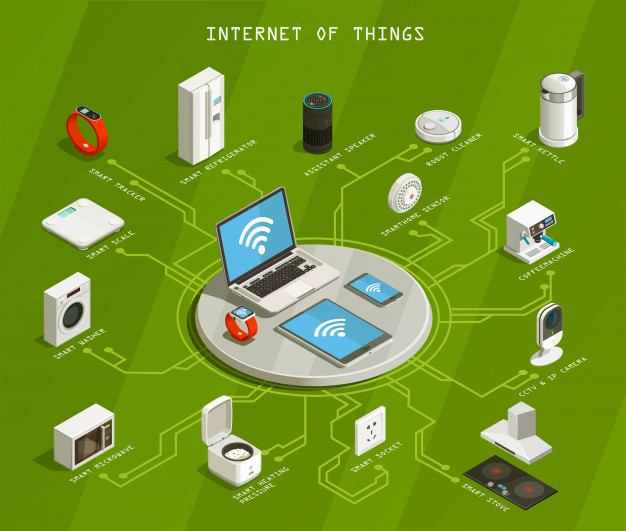IoT has fortified itself as one of the essential technologies driving human-tech interactions in the 21st century. IoT-connected devices have made the world’s daily interactions more innovative and timely by increasing response rates.
It has simply merged the physical universe with the digital ecosystem.
How does IoT work?
IoT enables interrelated computing devices to interact across different network types to create a more connected world. The primary communication channels of IoT are the Cloud, big data, analytics, and mobile technologies collecting and sharing data.
Digital systems can adjust, monitor, and record interactions between IoT-connected devices.
Affordable computer chips extend the provision to add sensors to different IoT devices and enhance their digital capabilities to collect and distribute data in real-time. The Internet of Things refers to the multitudes of digital devices connected to the internet, purposively gathering data and sharing it in real-time.
Why Do Connected Devices Share Data?
Each IoT-connected device collects data for a particular purpose, and it can help give people an elegant user experience. Businesses can use specific IoT devices to monitor and re-structure how they deliver their products and services to customers. The data generated through the Internet of Things propagates contextualized interactions between different connected devices. It allows businesses to increase operational efficiency and save resources such as time, money, and workforce.
IoT has highlighted great potential for change. In industrial applications, adding sensors to product lines helps reduce wastage and increases efficiency. Studies underline that over 30 percent of US manufacturers are already using IoT sensors to gather data and improve their value chains.
Technologies Making IoT Possible
The concept of the Internet of Things has existed for a long while. Still, its practicality got more established with recent breakthroughs and investments in different technologies. To get a complete understanding of the relevance of IoT, let’s highlight the technologies that have made IoT possible:
Cheap Low-Power Sensor Technology
Many Internet of Things (IoT) devices require a battery and maintenance-free terminus to work effectively. Smart wireless components enable the use of IoT in any environment. Combining power-optimized wireless networks with low-cost sensor technology has opened doors for the development of many IoT applications.
Connectivity
The Internet of Things comprises interrelated computing devices that require smooth and uninterrupted connectivity to work. Network protocols developed over the internet make it easier to connect sensors and data IoT devices to the Cloud and transfer data between “Things.”
Cloud Computing
Cloud computing platforms provide the infrastructure needed to exchange and analyze data smoothly between businesses and consumers without overall human mediation. The Cloud uses a centralized server to provide IoT data storage and transfer of large data packets through the internet. The IoT data generated can get accessed when the need arises.
Machine learning and Data Analytics
Mountains of data get generated by the Internet of Things every second using various IoT-connected devices. Machine learning provides the analytical power needed to create insight from the data. Predictability gets enhanced by highlighting data patterns and behavior in unique events. Businesses generate insights quicker and with high efficiency.
Artificial Intelligence
Artificial intelligence IoT devices, combined with neural networks, propel intelligent machines that use natural-language processing technology to process and analyze large amounts of data. IoT focuses on the interactions of devices using the internet. Artificial Intelligence IoT devices learn from the data and analyze it to simulate smart behavior in decision-making.
The Future of IoT
The future of the Internet of Things highlights an unlimited potential, with its value stretching from connecting billions of IoT devices simultaneously to making enormous data actionable. IoT platforms and Artificial Intelligence are increasing business capacity by constantly highlighting additional streams of revenue.
IoT enables quick automation and diverse business processes.
There are many IoT services and applications under production. Some have already filled the market; smart home products, including smart switches and motion sensors. However, most IoT products and services are still under trial. The primary reason is that IoT components such as sensor technology, 5G, machine learning, and big data analytics are also at an early development stage.
IoT is still in its infancy stages of development.
The prices of sensors and IoT communication devices continue to decline. Thus it’s more cost-efficient to connect multiple devices to cloud platforms. Some products may not always connect smoothly to each other because significant IoT-Technologies are still in the infancy development stages.
IoT investments’ growth drives an exciting wave of IoT applications and consumer IoT devices that provide real-time intuitive interactions between humans and machines. There are many IoT device makers, application builders, and network operators.
IoT Security Concerns and Measures
IoT-connected devices have increased, and people’s lives and work environments are more integrated with smart IoT applications. The growing interdependence between humans and technology has made apparent many dangers of the Internet of Things. Many risks are getting highlighted as tech grows to run various activities in people’s lives.
The security risks and levels regarding IoT devices often get overlooked.
IoT solves business problems across multiple industries. The early adopters of IoT applications such as healthcare, smart cities, transportation, and different manufacturers are already enjoying IoT’s many benefits.
Don’t get excited just yet,
Despite having many benefits, IoT and its unlimited interconnectivity present substantial challenges regarding security risks spawning from unsecured devices and applications connected to the internet network, increasing attack targets.
Absolute security and privacy for every device connected to the Internet of Things remains critical.
The first reason focuses on how regular cybersecurity applications struggle to recognize specific IoT devices and their expected behaviors. Second, any business center can deploy IoT devices. They rarely get viewed in correspondence with IT, which leaves room for bypassing typical IT security protocols like asset management and security patches.
How to improve IoT Security?
Anything that’s connected to the internet is prone to hacking. Hence, manufacturers must ensure that all consumer IoT devices are secure before releasing them onto the market.
IoT-connected devices are used to monitor and control many processes, making them attractive network targets for hackers. The devices often remain as unmanaged endpoints within the network, prone to malware invasions and password-targeted hacks.
Surveillance also rises to a dominant security concern when almost every product people own has connectivity to the IoT. There are substantial risks of unwarranted observation of users. Also, intelligence services and hackers can use IoT for target identification, monitoring, and location tracking to infiltrate networks.
What Industries Benefit from IoT?
IoT suits any business or industry that wants to increase its efficiency and ROI by installing sensors on their business process devices. Here is a quick list of different industries that are taking advantage of IoT to leverage better customer service and generate more business:
Smart homes & buildings
The residential and commercial real estate industry has enjoyed massive investments and infusions of IoT devices and innovative technologies. Households now have access to home automation systems like smart doors, heating systems, security cameras, and smart lighting systems.
Manufacturing
Manufacturers may quickly increase their competitive advantage by using production-line monitoring systems and ensuring equipment maintenance when sensors detect a probable failure. Sensors measure and alert any compromise in production output manufacturers can quickly respond to equipment inefficiencies and improve accuracy as soon as sensors point out upcoming repairs and machine servicing. Companies using IoT can minimize operational costs by improving asset performance management and increasing up-time.
Automotives
The aggregated information collected using IoT-based applications enables automotive manufacturers and suppliers to learn more about car maintenance and inform car owners. Besides fusing IoT in production lines, the sensors can detect equipment failures in vehicles already on the road and alert drivers with details.
Energy & Utilities
Data IoT devices continuously help gas and oil companies track their drilling lines and monitor rigs with increased efficiency. IoT sensors and devices help with process optimization, reducing costs of production and service costs. IoT is improving efficiency in the Energy and utility sectors using IoT technology to run the energy sector promotes efficient energy use and saves resources by eliminating.
The Smart Energy Grid supplements electricity networks by enabling bi-directional digital communications regarding electricity and all data involved. Smart grid technology enables quick detection of misuse and faults as they emerge. Smart grids also contain self-healing provisions that allow electricity consumers to take part in service provision and information exchange.
Transportation and Logistics
IoT data sensors enable fleets of trucks, ships, and trains that carry inventory to receive routing tips based on weather data, driver availability, or vehicle availability. Businesses can also equip their inventory with sensors to track, trace, and monitor temperature control. For example, food and pharmaceutical industries transport temperature-sensitive cargo and benefit from receiving alerts whenever temperatures rise or fall to levels that may endanger the products.
Retail
Retail companies can benefit from IoT applications by using the data to identify the best ways to optimize the supply chain and improve customer service and experience. The Internet of Things in retail also propels reduction in operational costs and easier inventory management. Businesses can increase customer engagement and improve the experience.
Let’s look at smart shelves, for example. Businesses can install weight sensors on their store shelves and send data to the IoT monitoring platform to trigger inventory alerts when items are below the standard quantity.
Public Sector
Government institutions or Public Offices may use IoT applications when notifying the public about power outages or even interruptions of water and sanitation services. IoT-based systems can collect data regarding outages and deploy necessary resources to promote efficiency and timely recovery.
Finance
Security between banks and customers has experienced significant increments since combining with IoT. IoT in banking has propelled the development of many IoT-based applications like mobile banking services, and Smart Cash points, and ATMs. Customers can easily transfer, deposit, and perform many financial transactions over the internet using their mobile phones or personal computer.
Healthcare
Health institutions and all related staff often need various specific IoT devices to track patient-help utilities’ availability and usability. Think about how equipping a hospital’s wheelchairs with IoT sensors enables tracking and monitoring the inventory. Anyone can quickly find the nearest usable wheelchair and healthcare equipment alike. Tracking hospital assets this way ensures proper usage and financial accountability for every investment in different departments.
IoT and Industrial Safety
The growing industrial and commercial world continues to highlight rising expectations of consumers regarding services. Environmental safety must remain upheld to minimize operational efficiencies.
People working in risky environments like chemical plants, oil and gas fields need real-time information regarding events affecting their surroundings. IoT sensor-based applications ensure people receive notifications regarding accidents and other misfortunes to enable them the swiftest escape.
Iot Improves Worker’s Safety
Connection IoT- applications with wearable equipment help precise monitoring of health and changes in environmental conditions. People can understand their health better, and patients can also receive remote monitoring by their physicians.
What Are IoT Applications?
IoT applications are software-as-a-service (SaaS) programs that access cloud computing platforms with machine learning algorithms to collect, process, and make data usable. IoT applications use sensors and IoT-connected devices to supply businesses with the data needed to plan exponential growth. Avoid recreation of business processes.
Machine learning algorithms identify anomalies in equipment and alert users; sometimes, they even trigger automated fixing and other proactive countermeasures. Businesses can use IoT applications to enhance existing processes within supply chains and improve customer experience, human resources, and financial management. IoT dashboards and alerts provide access to key performance indicators and statistical information.
Make Better Business decisions with Enterprise Engineering Solutions IoT
IoT is becoming more widespread across the marketplace. You must capitalize quickly on the tremendous value it can bring to your business. Have a chat with a seasoned IoT professional here at Enterprise Engineering Solutions.
Receive the only knowledge you need to understand the business application on IoT and get the most out of your supply chain with meaningful IoT solutions. Leverage the digital world to achieve intelligent operational efficiency and worker productivity.

